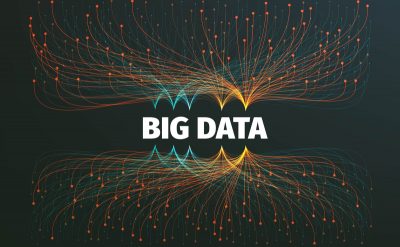Big data has become the lifeblood of several modern businesses. It has rendered greater flexibility and agility to businesses to churn out more productivity. Businesses can gain greater set of capabilities that help in achieving major goals with big data tools and technologies during the time of crisis. Therefore, business makers must collaborate with IT teams to develop high-end Big Data strategy.
Before adopting Big Data in the business environment, begin with understanding the idea of Big Data.
What is Big Data?
It is a term that describes a large volume of data, structured and unstructured that is useful for the business on a day-to-day basis. It includes the act of accessing and storing large amounts of information for analytics that has been around for the time being. In the concept of big data, the amount of data isn’t important; what organizations do with the data is what matters.
In simple words, these massive volumes of data can be used to address business problems that you wouldn’t have been able to handle before. Big data is useful in gaining a business’s valuable insights that help in making strategic business moves and better decision making.
Big Data Fight against COVID-19
You might not know, but big data is acting as an asset helping forecast and understand the impact of coronavirus. It is being used by healthcare workers, scientists, epidemiologists, and policymakers to aggregate and synthesize data on a regular scale.
Below listed are the ways Big Data is storing and extending valuable information during the pandemic:
1. Big data tools are now making it easy to aggregate and synthesize the data as it was not available during previous pandemics and epidemics.
2. It is acting resourcefully in studying the metrics about population movements across regions, listing health protocols, talk on public compliances, and check the frequency of people with higher rates of temperature with temperature scanner.
3. Healthcare-related data is pulled from trusted bodies such as the US Centers for Disease Control and Prevention (CDC) and the World Health Organization (WHO), giving information on the number of confirmed cases, facilities, and recoveries. Verizon has launched a data coronavirus search engine, which enlists and offers meaningful academic articles on COVID-19 research.
4. Big Data is dynamic in nature as it helps in collecting, storing, and processing information in a variety of data formats — numeric, structured, unstructured from numerous sources—making it a great advantage when used along with Artificial Intelligence (AI), Machine Learning, and IoT applications.
5. The collection of information helps in early detection of future diseases with the identification of potential patients, conducting their clinical trials due to faster and real-time evaluation in decision making based on data.
So, the more we know about the disease, the more the chances to defeat it. The large heap of information available is making it vulnerable to cyberattacks alongside. However, without keeping aside the importance of big data, we need to work on the ways to protect it. Apart from educating us with the modeling efforts and predicting the flow of pandemic, big data, machine learning, and other technologies can easily analyze and help people in preparing and sharing responses to this and future pandemics.
With the explosion of information available on the Internet, there should be a secure and accessible place for storage. In the future, big data will create a holistic view across various areas, including Compliance Information, Customer Preference, Geolocation Data, Inventory, and Shipment Tracking, Global Network Traffic Patterns, and Security Events. Big data isn’t just an important part of the future; it will be future itself.








































































